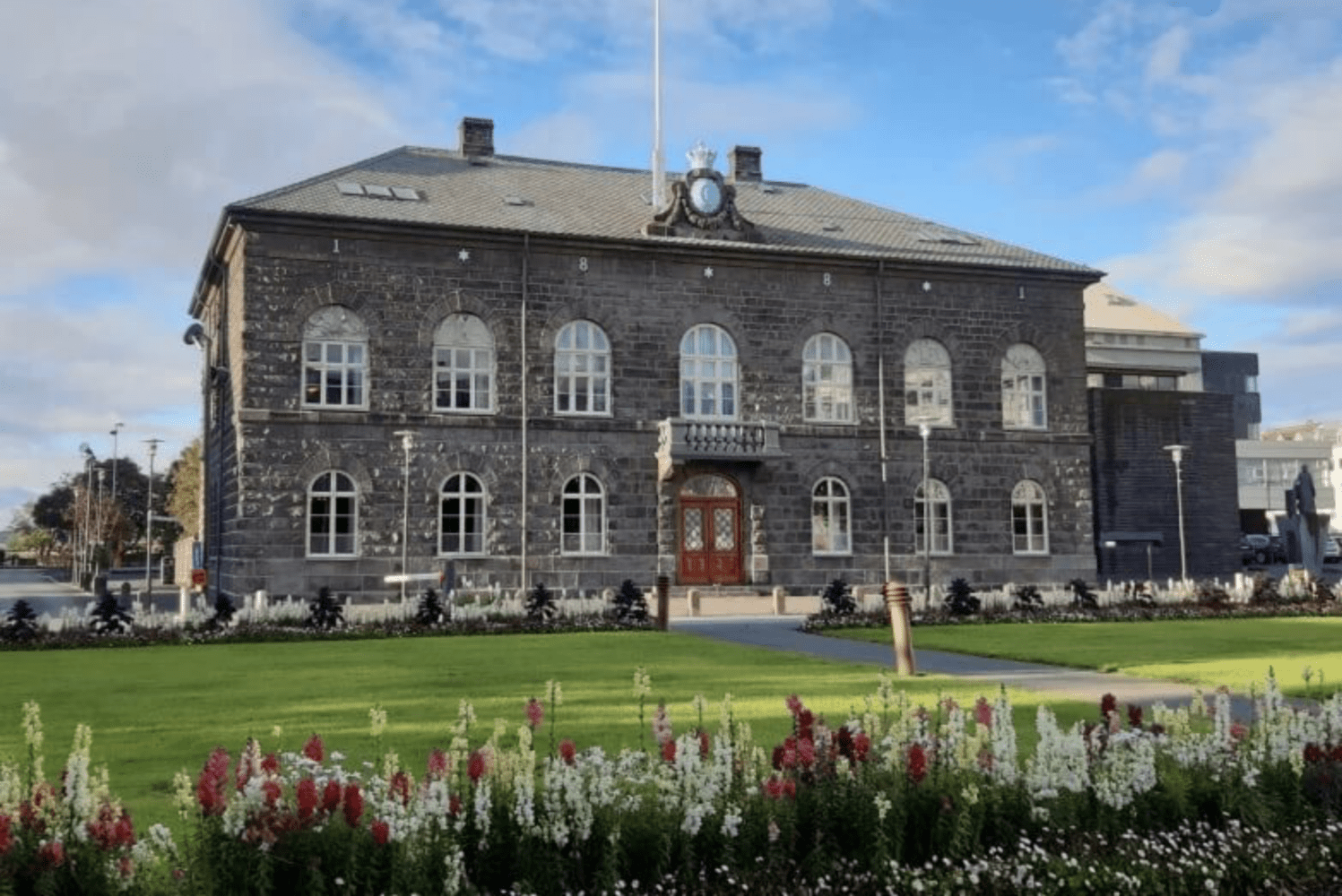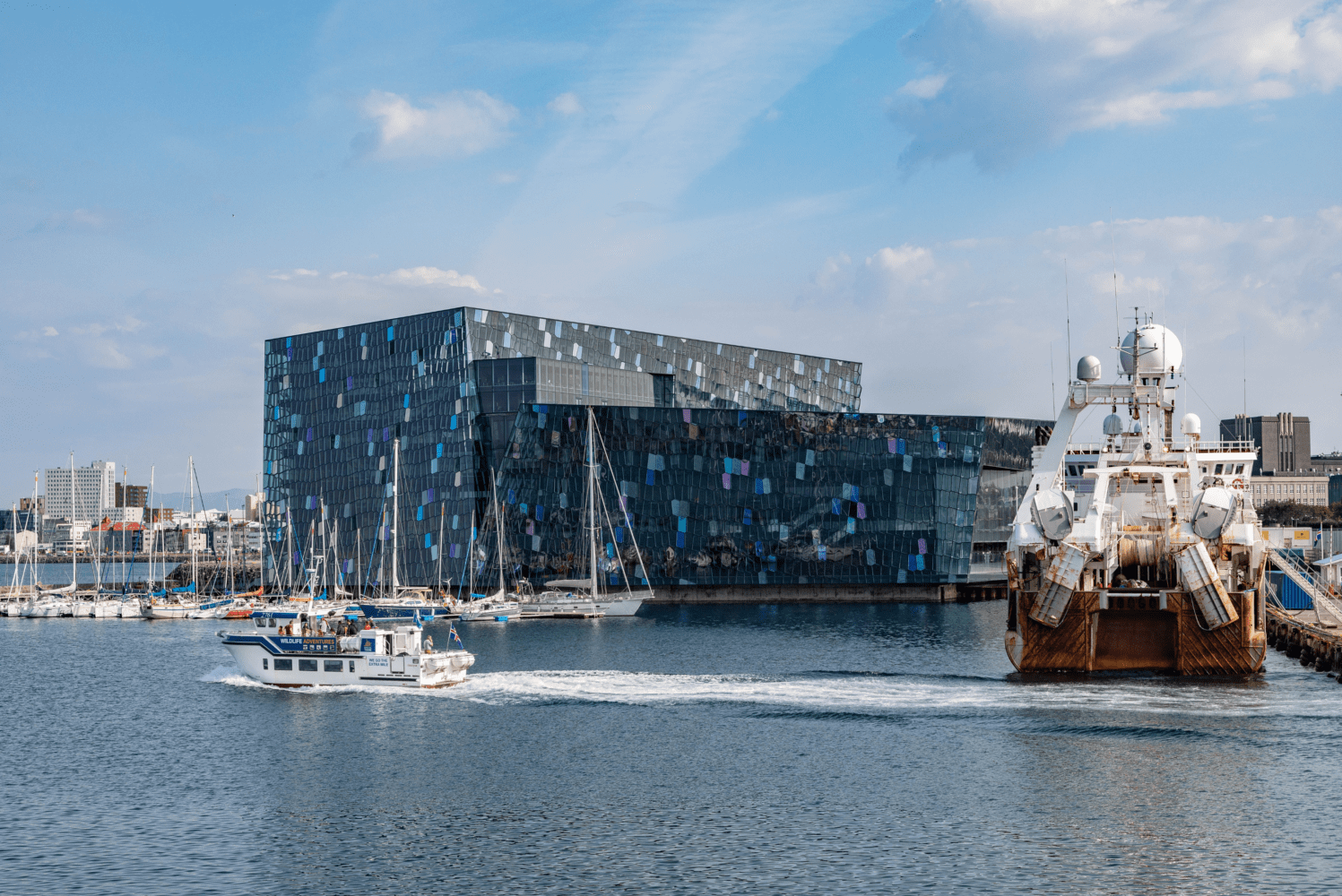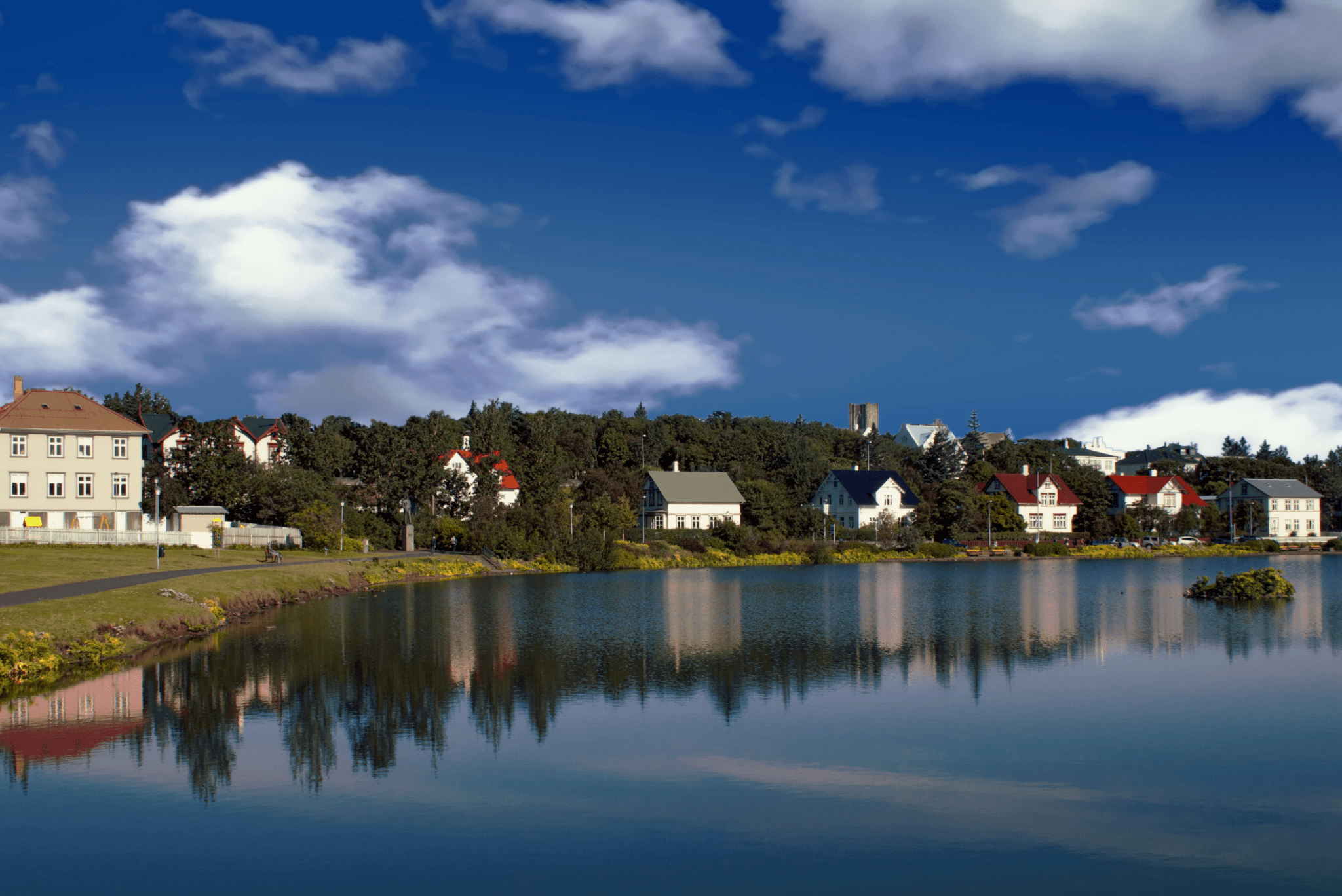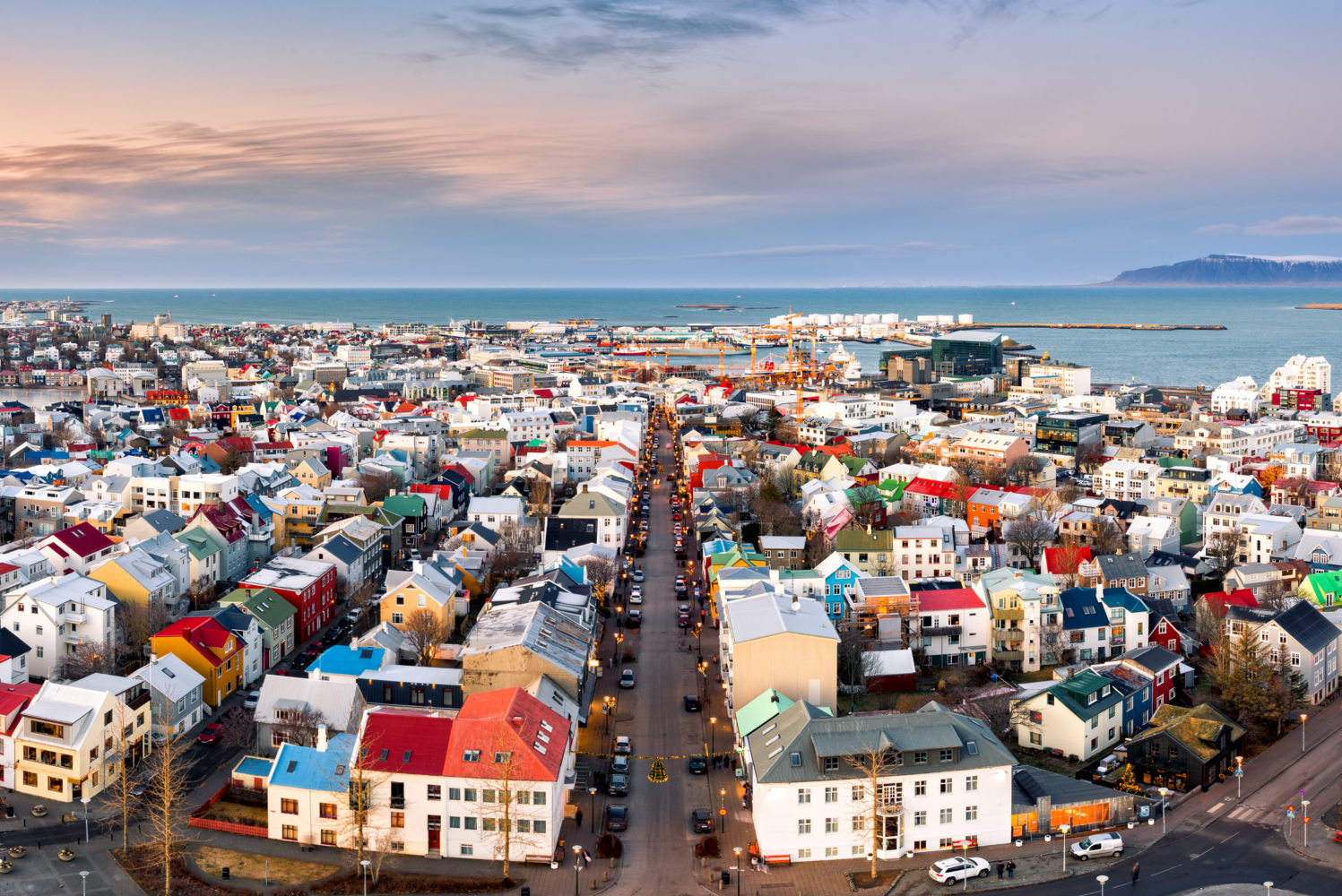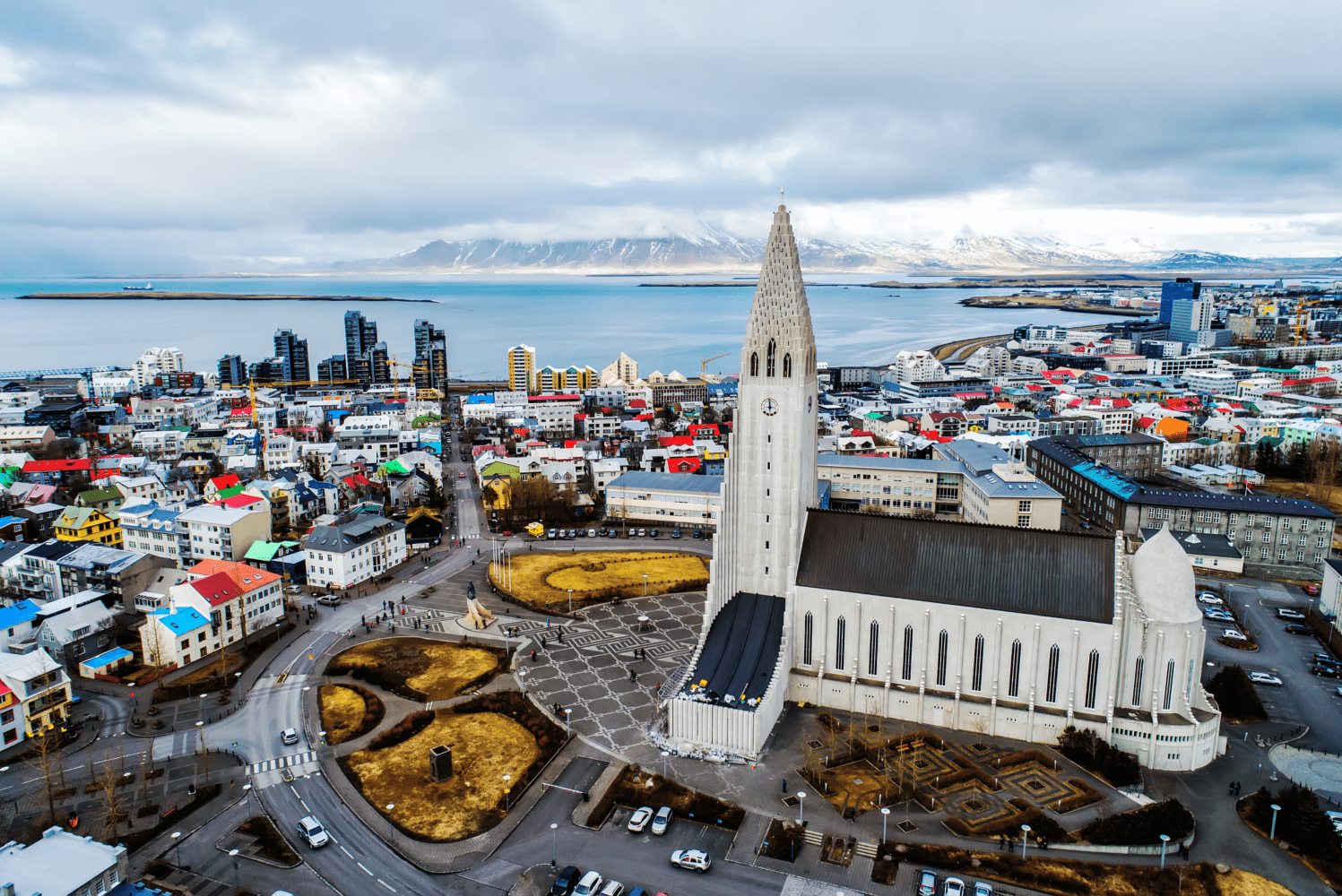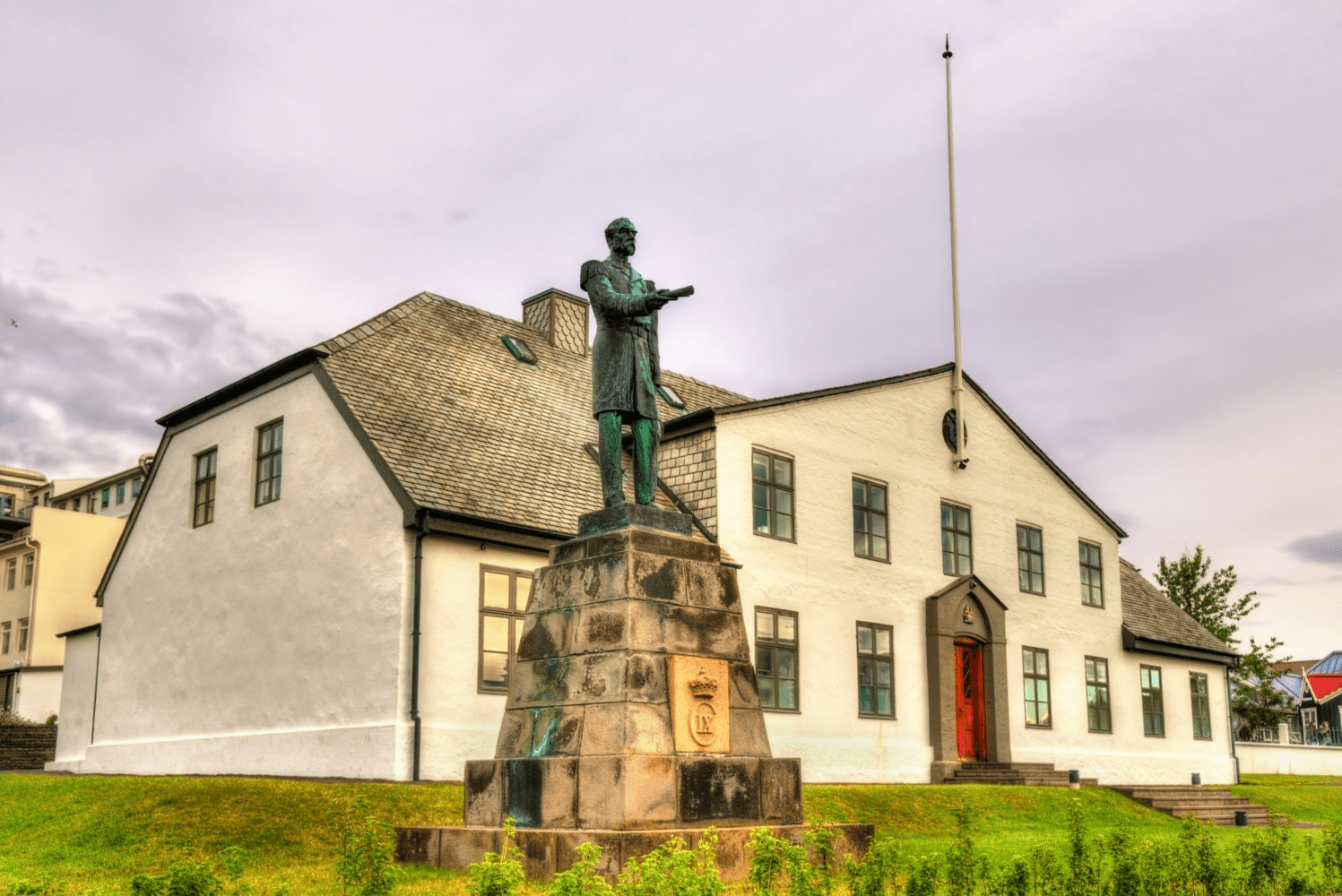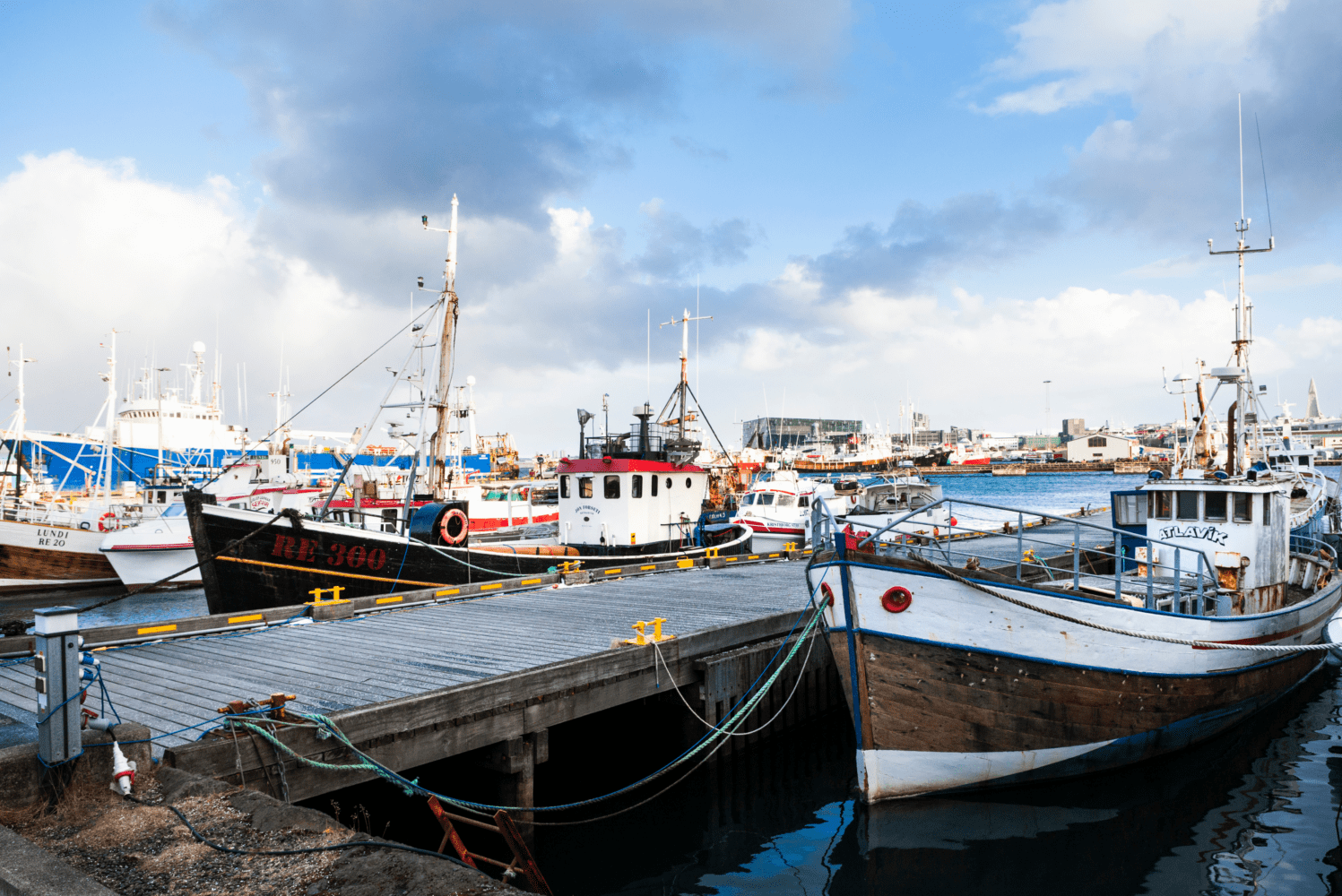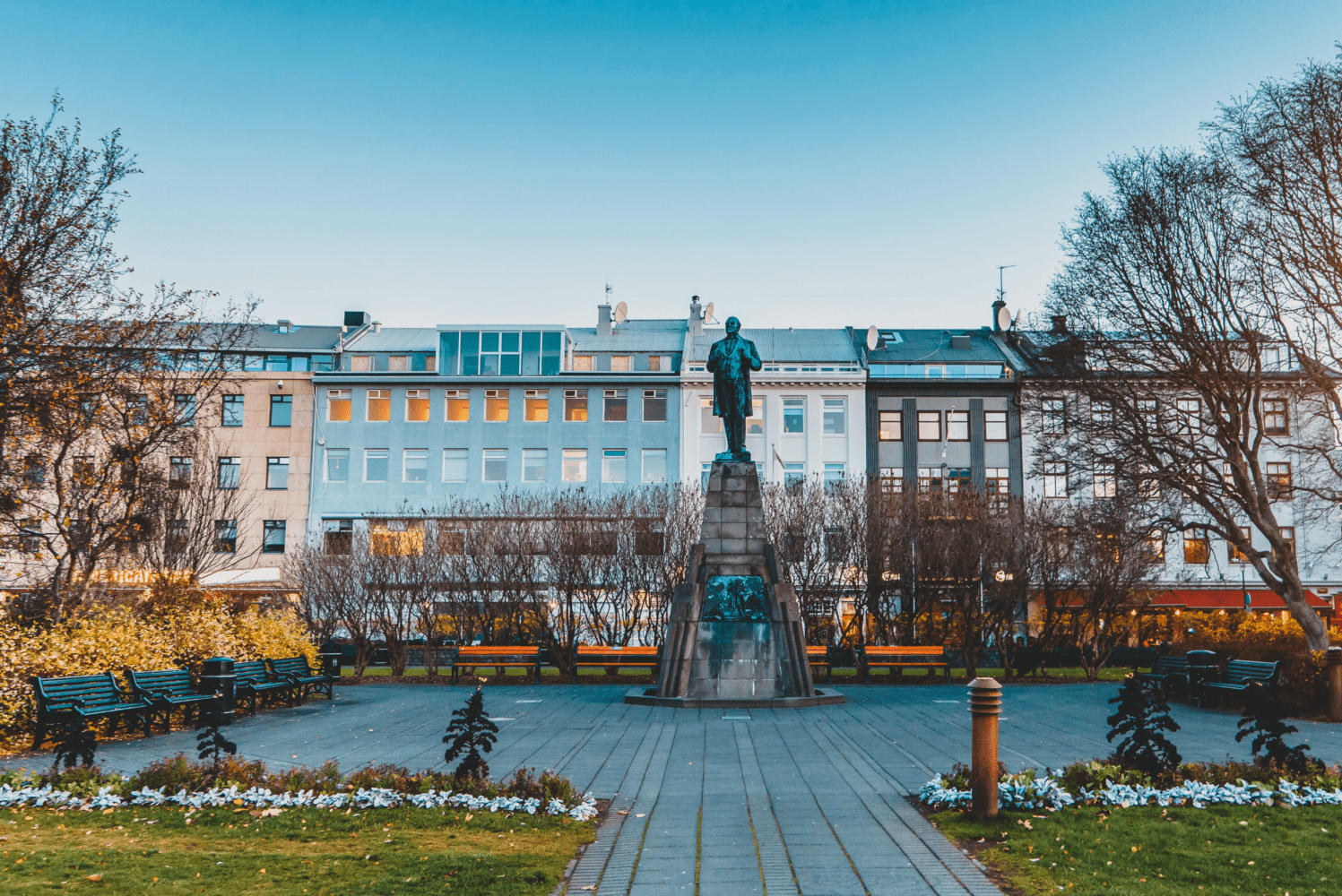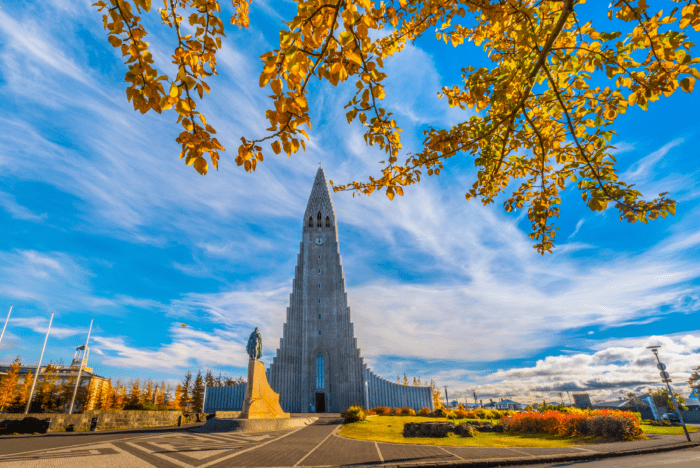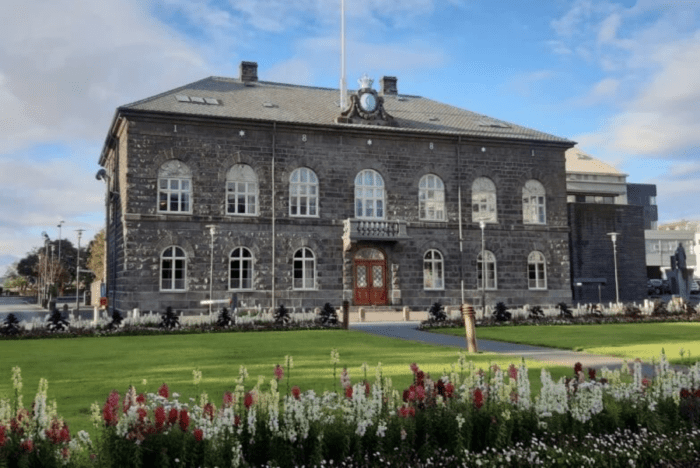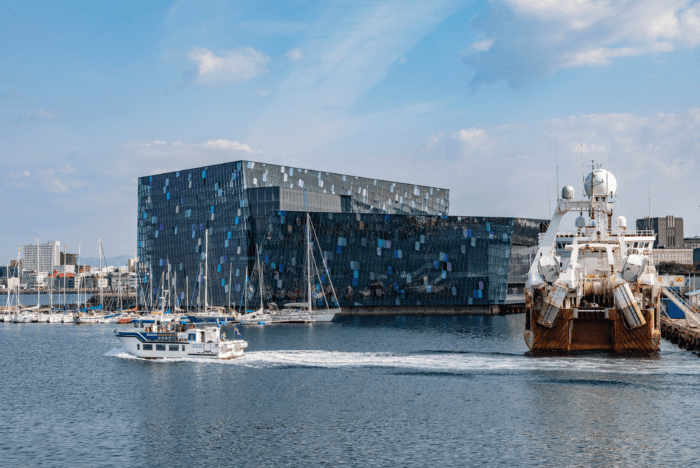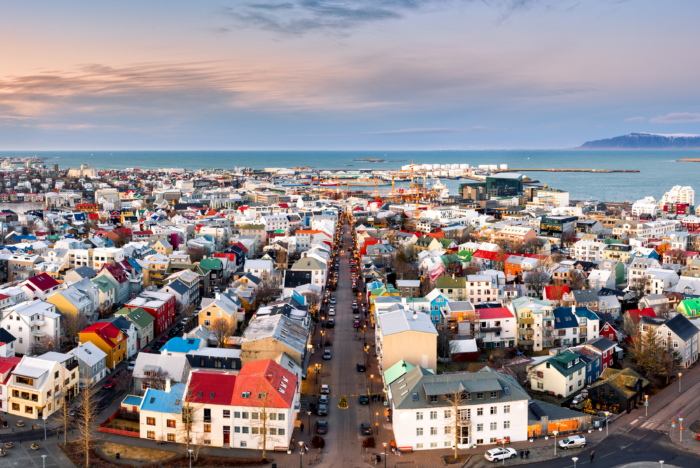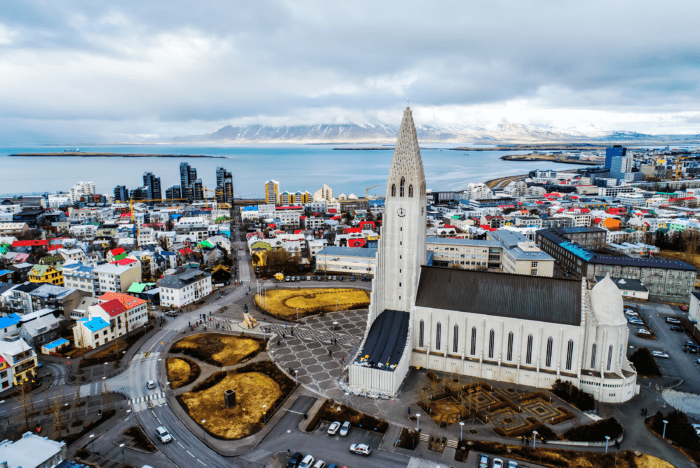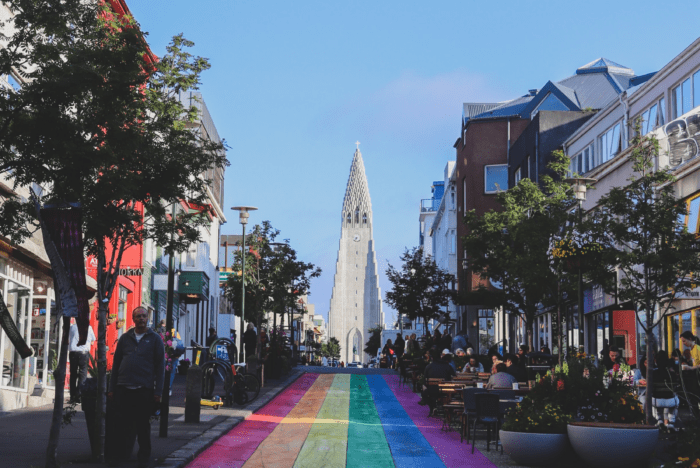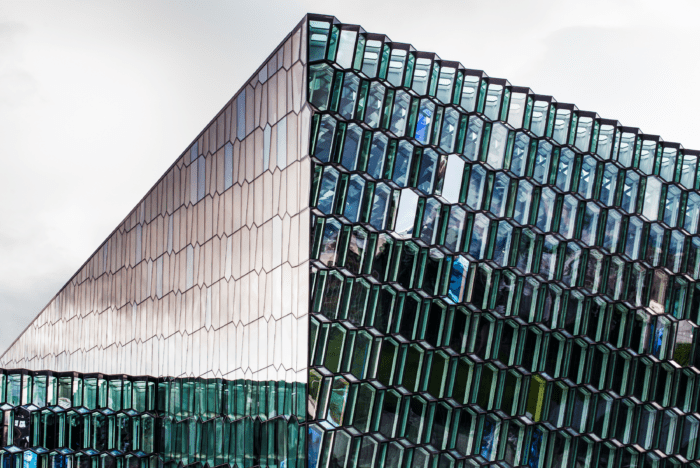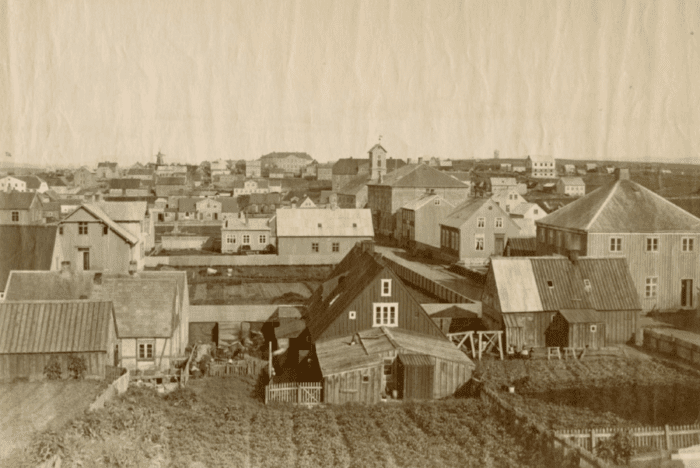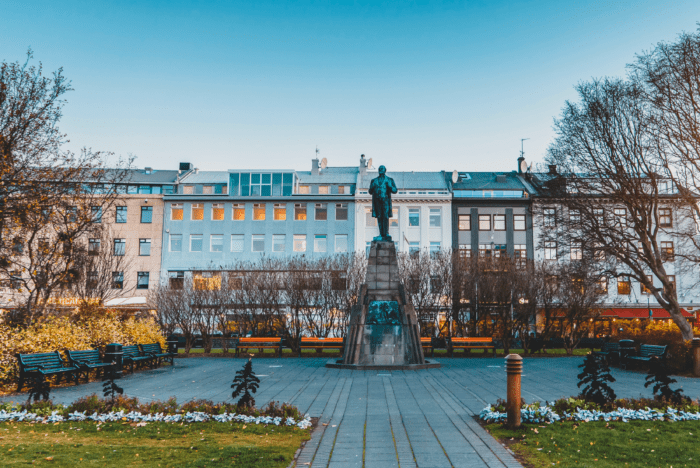
Private Reykjavik City Walk
Get an introduction to the history and culture of Iceland with the comfort of a private tour in the heart of Reykjavik where it all started.
Please note:
Available: All year
Duration: Approx. 3-4hrs, depending on your time spent at each stop.
Meeting location: Entrance of Hallgrímskirkja Church
Highlights
- Hallgrímskirkja – The Church of Hallgrimur
- Skólavörðustígur – The Reykjavik Rainbow Street
- Stjórnarráðshúsið – The Prime Minister's Office
- Harpa Concert Hall and Conference Centre
- Gamla Reykjavíkurhöfnin – The Old Harbor of Reykjavik
- Grjótaþorpið – The Rock Village district
- Austurvöllur Square
- Alþingishúsið – The Parliament House
- Dómkirkjan í Reykjavík – The Cathedral of Reykjavik
- Ráðhús Reykjavíkur – The City Hall of Reykjavik
- Reykjavíkurtjörn/Tjörnin – The Pond of Reykjavik
Description
The vibrant city of Reykjavik started as a small village over 2,000 years ago when the first Viking settlers arrived from Norway. Most of them lived on farmsteads with self-sufficiency farming but soon Reykjavik became an important fishing and trading post, making Reykjavíkurhöfn, the Old Harbor of Reykjavik, the main lifeline of its residents and the neighborhood area. With that farmers and workers from the rural area of Iceland started moving to this fishing village around 1800 for jobs in the fishing industry, building small turf cottages in the downtown area by the harbor around the main street Aðalstræti, the oldest part of this city. From there the village grew with more buildings built and fewer farmsteads. Despite that, there is still one old sheep farmer left in the borough of Breiðholt with a sheep shed in his back garden. Reykjavik was granted municipal powers in 1786 but it wasn't called a city until 1962. Reykjavik City is divided into 8 boroughs and as of January 1st, 2022 Iceland has a population of 376,248 and 134,599 living in these boroughs. The whole Reykjavik Capital Area consists of seven municipalities with a population of 240,882, meaning 64% of Iceland's population lives in the Reykjavik Capital Area. Adding to that, many attend work and school in Reykjavik from other closeby municipalities.
We will take a walk around the downtown city of Reykjavik where it all started. First, you'll meet your private guide by the entrance of Hallgrímskirkja, a church built differently from the typical small wooden churches of Iceland. This best-known landmark of Reykjavik stands 74m (244 ft) tall on top of the hill Skólavörðuholt and is the highest church in Iceland. Its design was inspired by glaciers and the basaltic cliffs and mountains in Iceland, designed by the renowned Guðjón Samúelsson who was the State Architect of Iceland and designed many of the most beautiful buildings in Iceland, like the University of Iceland, the first luxury hotel Hotel Borg, and the only Catholic church in Iceland the Roman Catholic Cathedral. For a small fee on-site, you can take an elevator up the church's bell tower for an amazing panoramic view over the city and its surrounding mountain rows, and in front of the church's entrance is the statue of Leifur Eiríksson, the famous Norse explorer who settled in North America around AD 1000 before Christopher Columbus. From there we walk a street leading downhill called Skólavörðustígur, otherwise known as Reykjavik Rainbow Street. This beautiful street of cafés, stores, and galleries, was partly painted in the colors of the rainbow as part of the Reykjavik Pride parade held in August every year, to represent Iceland's friendliness towards the LGBTQ community. Taking a selfie at the bottom of the rainbow-colored Skólavörðustígur with Hallgrímskirkja towering in the background makes for a great memory to photograph. We continue our way downwards to where Stjórnarráðshúsið stands, which houses the Prime Minister's Office. It was built as the House of Correction, locally called Tugthúsið, and before its construction, there was no prison in Iceland so those sentenced had to be sent overseas to Denmark since Iceland was under the reign of the Kingdom of Denmark.
We now continue our way to the modern glass-honeycomb structured Harpa Concert Hall and Conference Center by the seafront, which has won a lot of awards for its structure inspired by Icelandic nature. It has amazing views over the bay extending to the mountain Esja and even to the glacier Snæfellsjökull. A walking path leads to the historic Old Harbor of Reykjavik which played a significant role in Reykjavik changing from a small fishing village into Iceland's capital city. Today it has many colorful houses with tourism operations, cafés, art galleries, and restaurants serving freshly caught fish from the harbor. We turn into the oldest part of Reykjavik called Grjótaþorp, or the Rock Village due to it being a field of rocks before they were removed to build the Cathedral of Reykjavik, for a glimpse of many of the oldest houses left from the 18th and 19th centuries in the oldest district of Reykjavik. Aðalstræti was the first street in Reykjavik and the main shopping street for goods delivered through the Old Harbor. This area is where clusters of turf houses built by workers and fishermen used to stand in between wooden buildings. Close by is the main public square of Reykjavik called Austurvöllur, with Hotel Borg, the Parliament House, and the Cathedral of Reykjavik standing alongside it, and cafés, bars, and restaurants on the other side. In the middle of the square is the statue of Jón Sigurðsson who was the main leader of Iceland gaining independence from the Kingdom of Denmark. One of the oldest parliaments in the world Alþingi was held every year at Thingvellir from AD 930 but then moved to Alþingishúsið or the Parliament House, a beautiful structure made of hewn dolerite that is a subvolcanic rock and behind it is an ornament garden believed to the be the oldest public garden in Iceland in its original appearance. Next to the Parliament house stands the neoclassical Lutheran church Cathedral of Reykjavik, the first building completed in the notion of Reykjavik becoming the capital city of Iceland.
We end our walk by Reykjavíkurtjörn or the Pond of Reykjavik. Extending into this pond is the City Hall of Reykjavik, locally called Ráðhús Reykjavíkur, which houses the offices of the mayor, and on the ground floor a large 3D model of Iceland, called Íslandslíkanið. Like many other buildings in Reykjavik, the City Hall's structure was inspired by the mossy lava fields of Iceland, with a moss-grown wall by a rounded pond. Reykjavíkurtjörn, or Tjörnin for short, is popular among the locals for feeding the many species of water birds residing there. All year this area is buzzing with life, whether it be cycling, running or walking around Tjörnin, or ice skating during winters when it freezes over.
- Private guidance in the downtown area of Reykjavik City
- Knowledgeable & experienced English-speaking guide
Named after the 17th-century poet and clergyman Hallgrímur Pétursson, the Lutheran church Hallgrímskirkja is among the best-known landmarks of Reykjavik. It is the tallest church in our country, standing 74m (244 ft) tall. Designed by the State Architect of Iceland Guðjón Samúelsson – one of Iceland’s most renowned architects – its dramatic and unusual design is inspired by basalt columns, emulating the Icelandic landscape. Guðjón Samúelsson began drawing Hallgrímskirkja in 1936, but its construction didn’t begin until 1945. It wasn’t finished until 1986, long after Guðjón Samúelsson had passed away.
Admission to the church is free, but note the church may not always be open to the public during religious services and private events. For a small fee on location, you can take an elevator up to the church’s bell tower to enjoy a panoramic view over Reykjavik and the city’s surroundings. In front of Hallgrímskirkja is a statue of Leifur Eiríksson, the famous Norse explorer thought to be the first European to set foot in North America around AD 1000, before Christopher Columbus‘ settlement there. In 1930, the United States of America gifted Iceland this statue to commemorate the 1000th anniversary of Althingi, the Parliament of Iceland, first established AD 930 in Thingvellir.
- Please respect your surroundings – do not throw any trash.
- For environmental responsibility purposes, you do not need to print out your e-ticket.
- Dress according to the weather by wearing warm and wind-/waterproof clothing in layers and bring gloves and a hat.
- Wear suitable footwear, preferably waterproof with a good grip, in case of slippery conditions due to ice, rain, or gravel paths.
If you chose not to be picked up, your private guide will meet you by the entrance of Hallgrimskirkja Church.
- Difficulty:
- Very Easy
- Duration:
- 4 hours
- Price From:
- 90.000 ISK

